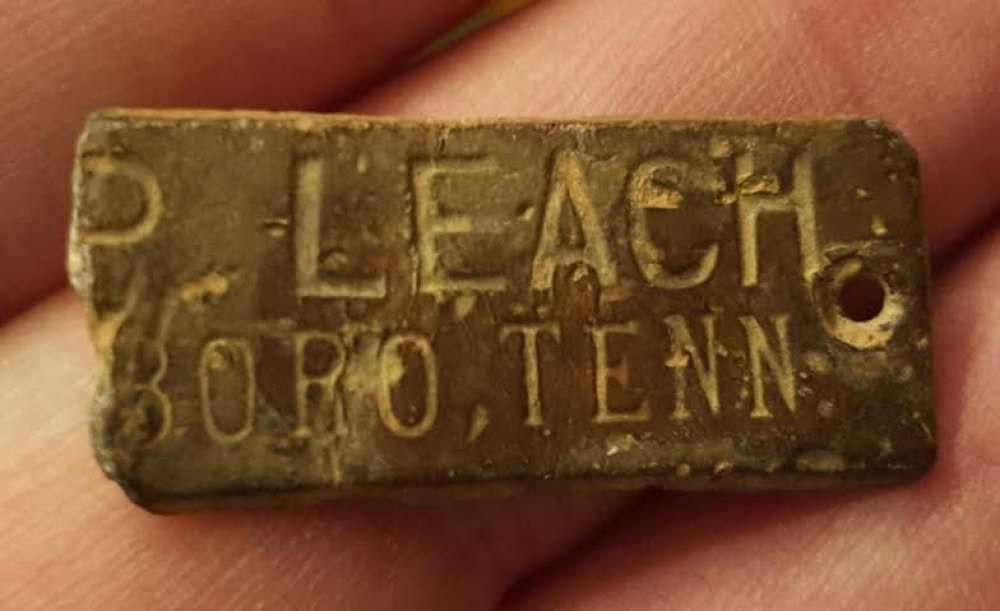The history of US military identification and dog tags

The history of US military identification and dog tags begins during the civil war when soldiers first found the need for a way to identify themselves in case they were killed in battle.
According to the National Museum of Naval Aviation:
"In the days of the Civil War, 1861-1865, some soldiers going into combat improvised their own identification, pinning slips of paper with name and home address to the backs of their coats, stenciling identification on their knapsacks or scratching it in the soft lead backing of the Army belt buckle."
Record keeping was haphazard under wartime conditions and it was often impossible to identify the remains of those killed in battle. At Vicksburg National Cemetery 75% of the Civil War dead are listed as unidentified. At Salisbury National Cemetery, North Carolina, 99% of the 12,126 Federal soldiers interred are listed as unidentified.
The first national cemeteries were established in 1862 by an act of Congress to provide a burial place for 'soldiers who shall die in the service of the country'. Upright headstones with rounded tops mark the graves of known soldiers. Small, square blocks, incised with a grave number only, designate the unknown veterans.
cemeteries were established in 1862 by an act of Congress to provide a burial place for 'soldiers who shall die in the service of the country'. Upright headstones with rounded tops mark the graves of known soldiers. Small, square blocks, incised with a grave number only, designate the unknown veterans.
From 1862 to 1906, many systems of identification were proposed. Many of these were available for sale to individuals privately but there was no standardised system. In 1906 an engraved circular aluminium disc was introduced and in 1913 these were made mandatory and went on to be used in WW1.
were proposed. Many of these were available for sale to individuals privately but there was no standardised system. In 1906 an engraved circular aluminium disc was introduced and in 1913 these were made mandatory and went on to be used in WW1.
During WW2 the circular, engraved disk was replaced  by the debossed rectangular shaped stainless steel tag with a notch. Around the same time the nickname 'dog tags' was adopted. The dog tags on the right, are shown without silencers which were adopted around the end of 1944 to reduce the noise made by the tags touching each other which could inadvertently reveal a soldiers position in combat.
by the debossed rectangular shaped stainless steel tag with a notch. Around the same time the nickname 'dog tags' was adopted. The dog tags on the right, are shown without silencers which were adopted around the end of 1944 to reduce the noise made by the tags touching each other which could inadvertently reveal a soldiers position in combat.
 The history of the notch has spawned a number of explanations including that it allowed the tag to be knocked between the teeth of the soldier after they had passed.
The history of the notch has spawned a number of explanations including that it allowed the tag to be knocked between the teeth of the soldier after they had passed.
The reality is that the notch allowed the US army medical department to quickly and accurately transfer the soldiers details to their medical or burial records using a special Addressograph imprinting machine (shown left). The notch meant that the tag could only be inserted into the imprinter one way.
The red arrow in the document below shows the carbon marks from the use of the Addressograph imprinter to transfer data from a soldier's dog tags to the 'Report of Burial'.

During the late 1950s the Notched dog tag was discontinued and replaced with the notch free tag that is used today. In addition the second tag was separated from the first tag by placing it on its own 4.5" long chain. If a soldier is killed in combat, the tag on the short chain is placed on the soldier's toe for identification. Thus, coming to be known as the 'toe tag'.
discontinued and replaced with the notch free tag that is used today. In addition the second tag was separated from the first tag by placing it on its own 4.5" long chain. If a soldier is killed in combat, the tag on the short chain is placed on the soldier's toe for identification. Thus, coming to be known as the 'toe tag'.

